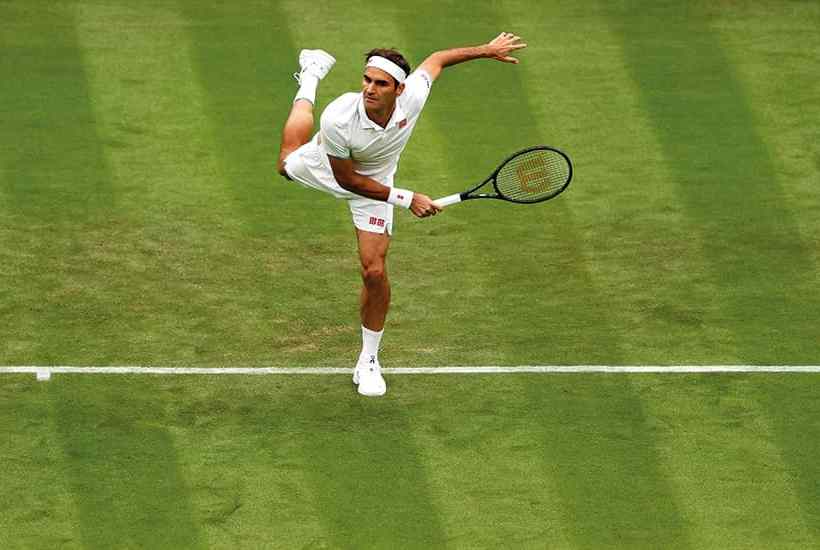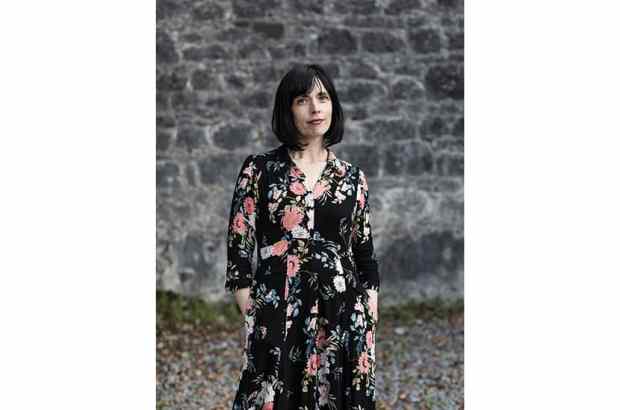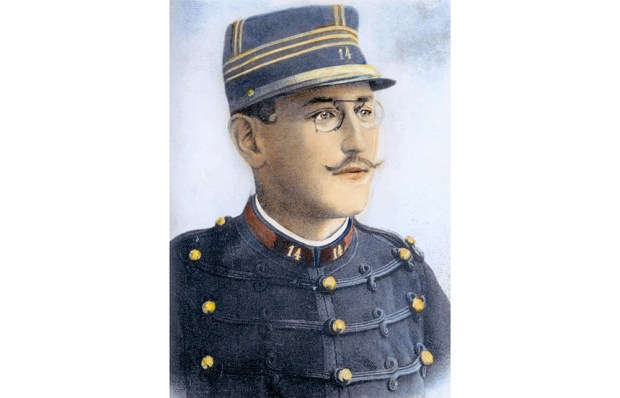Louis MacNeice once wrote that if you want to know what chasing the Grail is like, ask Lancelot not Galahad. Because failure helps you see — the successful types are too busy succeeding. Two recent books on tennis put this theory to the test. The Master, by Christopher Clarey, long-time tennis correspondent for the NY Times, is about Roger Federer’s greatness. Clarey played for Williams College, where he ‘struggled and choked enough to understand just how difficult it can be to hit the shots that virtuosos like Federer make look routine’. Billie Jean King’s most recent autobiography, All In, is the second. She tells the story from Galahad’s point of view.
King’s is harder to sum up: part coming-out memoir, part tennis journal and part polemic. The genres overlap, of course, and some of the famous moments of her life, such as her 1973 match against Bobby Riggs (nicknamed the Battle of the Sexes), include all three. One of the odd facts about fame is that it turns even private truths into public ones, and much of the prose of All In has a certain shine on it, even in King’s confessional modes: ‘I can’t remember a time when I didn’t have a restlessness, an ambition and an urgency,’ she begins. ‘But let me tell you how I truly became free.’
Raised by working-class parents (her father was a firefighter), she discovered tennis on the public courts of Long Beach, California. Later, she turned her athletic success into political leverage. When she started on the tennis circuit, the best players, both men and women, had to pretend to be amateurs; they took kick-backs from tournament sponsors under the table. Shamateurism, it was called. Eventually, some of the players rebelled; the men formed their own professional circuit and left the women behind, even though King lobbied repeatedly to be part of the process.
The details of all this are complicated, and involve many acronyms and breakaway leagues that fold into each other. But King, even in the middle of her playing career, had an extraordinary energy for fighting the bigger fights, and battled on several fronts the deep-rooted sexism and inequality she faced. She also learned how to work with people who had been condescending, unjust, mean and dishonest. ‘Ilana always tells me,’ she writes of her life partner, the tennis player Ilana Koss, ‘I have an amazing ability to avoid taking things personally — “You just start over and over again with people,” she says.’
The list includes Riggs, the villain of their famous tennis match, who goaded King into accepting his challenge after he beat her main rival, Margaret Court. King had to play him to stand up for women’s tennis. Her account of that match is one of the high points of the book. After Riggs lost the first set, the reporter Frank Gifford interviewed him during a changeover, where he gave an expert and honest account of why King was outplaying him. ‘To me,’ she writes, ‘that showed who Bobby Riggs really was — not just a hustler, a deal-maker, but a champion.’ They stayed friends afterwards and by the end of his life had a shared sense of real accomplishment. ‘We did make a difference, didn’t we?’ Bobby said to her shortly before he died.
King certainly made a difference. In 1972, the year before her encounter with Riggs, ‘only 3 per cent of American girls played high school sports; the number was 43 per cent in 2020’. But we also get glimpses of her private failures, such as the end of her loving but unconventional marriage to her college sweetheart Larry King. ‘She’s very compelling and draining,’ he once said. ‘She has a need for total attention.’ A relationship with a Beverly Hills hairdresser eventually exposed her to blackmail — their dispute (over a house) could only be resolved in court. But even then she refused to admit the whole truth. ‘Who turns being outed into a way to burrow deeper into the closet?’ she writes. ‘But that’s what I did.’ For understandable reasons: her various battles on behalf of women’s tennis depended largely on her public appeal.
Most of this has become public knowledge, but the book does offer glimpses behind the curtain. Confessing to her husband that she had an affair on the road, she warns him: ‘Oh, I’m going to ruin you, Larry. I’m going to ruin you’ — not as a threat, but out of a kind of horror of self-reproach. But there are also times when the public shine gets in the way, especially when she’s at her most inspiring: ‘You have to have a fire in your belly and put your ego on the shelf each day because it’s not about you, it’s about the change you’re seeking and everyone that is in the fight with you.’ On the whole, she comes across as a deeply impressive, likable, volatile, slightly relentless human being whose book is a little too long.
Federer’s life, by contrast, looks strangely uneventful. He played a lot of tennis, he won a lot of matches, and once, when he was a teenager, he almost got into a skiing accident. I’ve never been a fan of the great man, partly because of the general echo of adulation that follows him around, which isn’t his fault. But he also sometimes gave the sense that he was playing in front of a mirror. Clarey’s book opens with a scene in Argentina, where Federer has gone for a series of exhibitions, and is followed, inevitably, by crowds of worshippers. ‘They are so passionate,’ he says, almost giddily, in the car. ‘I’ve had more fans break down here in South America than anywhere else in the world, you know. They cry, and they shake, and they are just so, like, not in awe, but so happy to meet you that it’s disbelief for them.’
And yet, as the book goes on, I start to like him more. (What does he care, right?) Part of Clarey’s point is that being good at tennis involves, on some relatively profound level, being good at life. As a teenager, Federer used to throw tantrums on the court; later, he learned to control his rages, too much as it turned out, because he had muted something important about his personality that needed to find expression. So eventually he learned to get the balance right — crying after losses and moving on.
He has also managed to construct an extraordinary life for himself. In Switzerland, where he still lives much of the year, he can go out to eat without a bodyguard. He has raised four children on tour, without absenting himself from family life — because he has the money to bring them along. Wherever he goes, he relaxes by seeing the sights; he asks questions of journalists; he learns languages, partly because he realised that being good at tennis requires you to keep caring, and that means you have to leaven your interest in tennis with other things.
Mathematicians sometimes wonder: if the history of their subject had unfolded differently, would mathematical truth still look the same? Clarey’s book is an attempt to answer a similar question about Federer: were there moments when his greatness could have shifted tracks? He takes us through the matches that shaped his career with a vivid touch and a lively gift for anecdote. Along the way, we get a few gems of insight for the tennis nerds. That Federer, for example, learned from Pete Sampras how to vary his serve so that the toss didn’t give you any clues about the placement.
But some of Federer’s other self-insights suffer a little from the Galahad problem. Athletes tend to believe in the mantra definition of truth: an idea is only true if it helps you produce the right result. After he quit school to concentrate on tennis, his dentist asked him: ‘That’s it? Just tennis?’ So he switched dentists. ‘I never went back, because I felt like he’s not really understanding what I’m trying to do here,’ Federer told Clarey. ‘I’m chasing a dream. I’m trying to aim for the stars, and he’s trying to pull me back. And you know what? I don’t want to be surrounded by people like this.’ They sound like my kind of people.
Got something to add? Join the discussion and comment below.
Get 10 issues for just $10
Subscribe to The Spectator Australia today for the next 10 magazine issues, plus full online access, for just $10.
You might disagree with half of it, but you’ll enjoy reading all of it. Try your first month for free, then just $2 a week for the remainder of your first year.














Comments
Don't miss out
Join the conversation with other Spectator Australia readers. Subscribe to leave a comment.
SUBSCRIBEAlready a subscriber? Log in